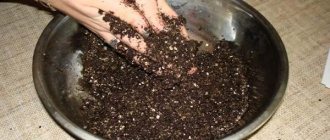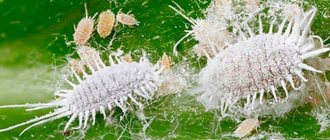Often, gardeners use homemade products to care for indoor plants. These include garlic water, which serves as an excellent antiseptic. If you make the solution according to all the rules and apply it using the right technology, you can nourish and strengthen the roots, as well as achieve lush flowering. It is worth considering that such a remedy is quite inexpensive and simple; it remains to find out which flowers can be watered with garlic water and which are undesirable.
Benefits and harms of use
The unique natural composition of garlic allows it to be used not only for culinary and health purposes, but also as a universal fertilizer for indoor and garden plants.
The main thing you need to understand is that the positive effect of the infusion is possible only if certain concentrations of the solution and frequency of watering are observed.
Almost all of the compounds found in garlic will benefit houseplants, but only in moderation.
The main positive impacts include:
Strengthening the root system, stimulating growth and increasing the number of inflorescences, as well as the general improvement of the plant in terms of key indicators.
This effect occurs with the systemic use of garlic water, which contains important microelements.For example, iron, potassium, phosphorus, potassium, magnesium, calcium. There is manganese and selenium, acids, antioxidants,
- Pest prevention or control. The specific smell, formed due to the presence of essential oils in the composition, helps to destroy pests. The insects do not disappear immediately, but after the first spraying the results are noticeable.
- Antiseptic effect. Using garlic water to water indoor plants, you can carry out antibacterial treatment of the soil and plant surfaces. Due to phytoncides, in particular allicin, bacteria and viruses are destroyed. Thanks to the action of these organic compounds, it becomes possible to get rid of mold and fungi.
How beneficial the use of garlic water will be depends on the method of preparing the solution and the frequency of watering.
If in moderate amounts the compounds contained in garlic water benefit indoor plants, then in excess they can be harmful .
Active substances, such as those contained in essential oils and other organic substances, can cause burns. This applies to the root system, as well as foliage and inflorescences, if irrigation is carried out.
In order not to harm the plants, you need to familiarize yourself with the proportions of preparing the solution. You should find out if there are any contraindications for use and, based on the recommendations, decide on the frequency of watering.
Watering rules
Processing with this method can be carried out in two ways:
- root (orchid in a pot is immersed in a container with garlic infusion);
- foliar (the solution is sprayed on the leaves and stems of the plant).
When root impregnation, you need to fill a bucket with water and pour all the concentrate into it (see recipe No. 2), then place the orchid there in a double-walled pot. The water in the bucket should cover 2/3 of the pot. The flower can be in the solution from 40 minutes to 3 hours. After this time, the flowerpot is removed and placed in a basin to drain off excess liquid. After half an hour, the orchid is returned to its usual place.
If foliar feeding is necessary, garlic water (see recipe No. 1) is placed in a spray bottle and the leaves and stems are treated with it. The remaining unused garlic solution can be watered over other home crops.
Use our advice, but remember: in order for a pampered orchid to please you with new delicate and fragrant petals, in addition to nourishment, it requires proper light and thermal conditions.
Garlic is widely known for being a natural remedy for strengthening the immune system and fighting infectious diseases. This effect is achieved due to its antiseptic properties. Flower growers have found use of these properties in caring for orchids.
Contraindications for use
Garlic water treatment, although considered safe for plants, has some limitations. These include:
Using a high concentration solution. This is evidenced by a particularly pungent odor, as well as an initially significant deviation from the proportions during the cooking process.- Formation of buds, active flowering. During this period, the likelihood of damage to plants from irrigating them with garlic water increases, since the content of active compounds in the solution can lead to burns.
- Unnatural smell of the solution, signs of deterioration (bubbles, foam, mold).
Contraindications should be taken into account so that the treatment actually becomes useful and does not lead to damage or death of plants.
Garlic water against diseases
The infusion, which is prepared to disinfect the soil, is suitable for preventive treatments. With its help you can protect plants from late blight, rust, spotting and other fungal infections.
Regular watering of indoor flowers with garlic water will strengthen their immunity and make them more resistant to negative environmental factors. It will be easier for them to adapt to new conditions after transplantation, and they will begin to bloom faster.
How to cook?
To prepare a nutrient solution for plants, you need to stock up on the main ingredient - garlic. Any bulbs will do, as long as they are not spoiled.
Depending on the main purpose, for example, whether the suspension is intended for fertilizer or pest control, the proportions may vary.
Using the example of a quick solution for preventive watering of plants, let’s consider the algorithm for preparing garlic water:
the main ingredient is purified, the weight should be 200 g of raw materials without husks;- the garlic is finely chopped, it is better to use auxiliary devices to save time, a mushy consistency is required;
- the mixture is poured with a liter of boiling water and closed loosely;
- the solution is infused for 40-60 minutes.
- strain.
Since you cannot use up the entire solution at once, because 3-4 tbsp are pre-diluted. per liter of water, then the remains should be removed in a dark, cool place.
Why is garlic remedy beneficial?
Why garlic gravy is useful becomes clear after studying the composition of the vegetable. Garlic has antiseptic properties and contains:
- sulfur;
- antioxidants;
- mineral salts;
- organic acids.
Due to the fact that the elements are presented in an easily digestible form, it is much easier for flowers to absorb them. By watering an orchid with a garlic solution, you can:
- Protect it from infection with fungal, viral and bacterial diseases.
- Cope with small pests.
- Boost her immunity.
- Disinfect the soil.
How to use?
The purpose of the solution may differ, which will affect the preparation recipe, proportions and methods of use. These features must be taken into account to obtain the desired effect.
From pests
You won’t be able to get rid of insects in one go , and you can’t use the solution often. That is why the concentration of the infusion should be low.
Take a head of garlic per liter of water (boiling water) and chop it. You need to insist for 5-7 days. Before use, dilute - 3-4 tbsp. for 10 liters of water.
Treatment is carried out by irrigating plant surfaces. Frequency 1-2 times a week. The infusion is diluted before use.
Like an antiseptic
To prepare the solution as an antiseptic, it is allowed to use not only the bulbs, but also the upper parts .
The main thing: clean all the raw materials from dirt, grind them and measure out 100 g. A liter of (warm) water is enough for this amount.
It is recommended to infuse the mixture for at least a day. Use no more than 1-2 times per month.
Like fertilizer
To feed the plant, garlic water is prepared as follows:
- 3 cloves (medium) are crushed into a paste;
- 3 liters of hot water is mixed with the main ingredient;
- insist for at least a day.
Before watering, the solution should not be cold; it is advisable to warm it to room temperature.
Garlic water for spraying
In the summer, flower growers take containers with plants to balconies and loggias; outdoors, there is a high probability of flowers being damaged by harmful insects.
In this case, this solution will also help, because the active sulfur compounds in garlic inhibit the proliferation of pests. Garlic is effective against aphids, ants and other insects. If pests are noticed, the entire plant must be treated.
To prepare a concentrate, 200 grams of crushed garlic (with the husks possible) is poured into 0.5 liters of liquid, tightly closed and left for 5 days. The strained infusion can be stored in the refrigerator for up to 5 months in an opaque container.
Plants should be treated with a diluted solution: 25 ml of concentrate per 1 liter of water. The product will not only destroy pests, but also repel new ones.
Errors and their consequences
You can achieve the desired effect and not harm the plants if you follow the above recommendations and avoid the following mistakes:
- Do not exceed the frequency of watering, on average it is 2-3 times a month.
- Treatment of plants during the formation of buds and flowering is extremely undesirable.
- Garlic water should be freshly prepared and at room temperature.
- Excessive irrigation and accumulation of infusion at the roots are avoided.
The above errors will lead to damage to the flowers or death.
Reviews from flower growers
Many orchidists conduct experiments with garlic water, the reviews after them are extremely positive , changes for the better are noticeable within a few days.
Tatyana S. “I bought a small orchid at a sale with limp, lifeless leaves. After 3-4 days I decided to pour garlic water on it, I thought that it couldn’t get any worse. I steeped it in a garlic solution for an hour, then dried it and put it away in the place reserved for it. Just a couple of days later it became clearly noticeable how it was saturated with moisture, the leaves became elastic and the roots began to grow! I was very pleased with the watering, I will definitely repeat it again!”
Irina. “I have had my orchid for 4 months now. When purchased, they promised active growth and flowering - the plant was completely healthy and strong. Maybe the change of environment had an effect on my orchid, but although it looked healthy, it completely stopped developing. They advised to pour a garlic solution over it for a change. I insisted in it for 2-3 hours, even sprayed the leaves with the solution. A week later I noticed the result - two small new roots erupted and a new tiny sprout appeared on the old peduncle (I did not remove it)! It’s just a miracle, I didn’t expect such a result!”
How to get rid of fruit and flower midges (drosophila and sciarid flies)
Midges in flowers are not only small flying flies, but also their larvae that live in the ground. Several generations of insects can simultaneously develop in one pot, from eggs to adults. Also, keep in mind that fungus gnats can spread quite quickly from one plant to another. Therefore, in order to remove insects forever, you need to fight them comprehensively and often repeatedly.
Why midges appear in indoor flowers: a common reason is that they could appear when the plant was transplanted into purchased soil, which was already infested with eggs and larvae. In addition, midges could simply fly in from a window in summer or autumn and settle in your flowers. One way or another, the main factor in the emergence and reproduction of sciarids and fruit flies is moist, overwatered soil, which attracts midges and creates favorable conditions for the transformation of dormant eggs into larvae. By the way, fruit flies could get into your apartment along with purchased vegetables, fruits, or fly to the smell of a stale product, and only then take a fancy to your flower pots.
Damage caused: adult individuals are harmless in themselves, but their larvae, feeding on the sap of the roots, destroy the plant. Flower midges are especially dangerous for seedlings and young plants.
Prevention: watering plants as the top 2 cm of soil dries, as well as periodic loosening and timely removal of diseased leaves. Moderate watering will make the soil less attractive to egg-laying adult midges and less favorable for the development of larvae.
Fighting methods
Instructions 1. Using folk remedies
Step 1. Let the soil dry out after the last watering so that at least 2 cm of the top layer is dry.
Step 2: Catch all adults. You can do this using:
- Traps: special (for example, a regular fly catching tape will do) or homemade ones. To make your own midge traps, you will need yellow cardboard (or cardboard painted yellow) and honey. Yellow cards should be coated with a thin layer of honey and hung (placed) near the pots. Remember to change traps as needed.
- Vacuum cleaner: remove the attachment or attach a small attachment without a brush to the hose and simply work the ground and window sill with it. The vacuum cleaner will easily capture insects even in flight. After this, the bag must be thrown away (if it is disposable) or emptied outside the apartment, and then treated with dichlorvos.
Correct care
It is recommended to regularly loosen the soil in flowerpots so that it can breathe.
Be careful with watering. As mentioned above, flowers do not like excess moisture. To prevent water from accumulating in the pot, drainage should be installed. If you water the plant from below, it will take only the amount of moisture that it needs.
For high-quality cultivation of beautiful and healthy flowers, the room in which they are located should be regularly ventilated.
An important factor is prevention against midges in the form of a weak solution of manganese. You can water the plant with it once every two weeks.
And the most important thing. Various flowers grow on windowsills and in living corners, differing from each other not only in color and shape, but also in the way they grow and feed. This means that their care will also be different. Therefore, before planting this or that type of flowering plant, information about it should be studied in detail: how often to water, what to fertilize, whether to prune, and so on.
Correct fit
Since it is easier to prevent a problem than to fix it, below we will look at the basic tips and recommendations for proper and error-free care of your green pets.
First of all, remember that before you start caring for a flower purchased in a store, it should be replanted in new soil, treated and disinfected with special means. To do this, you can use purchased or prepared fertilizers yourself, or calcine the soil in the oven at one hundred degrees.
Before planting any plant (even seeds), they should be thoroughly treated with a soap solution.











